The Most Dangerous Trees In The World
The world is full of dangerous creatures: lions, venomous spiders, deadly jellyfish, alligators and other such animals that can bite, tear, attack, chase. But they aren’t the only threats out there. Hidden among the lush landscapes and peaceful parks, there lies a menace as unexpected as it is extraordinary. Trees! Yes, those gentle giants that shade our picnics and fill our forests can be just as deadly. Join us as we unearth the most dangerous trees in the world.
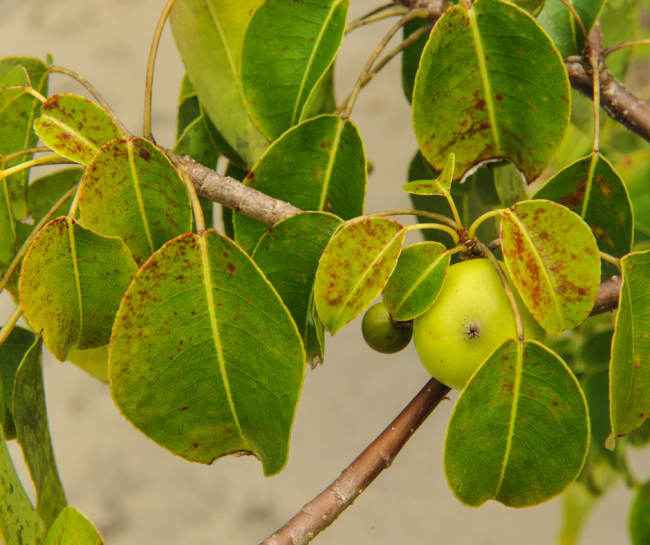
These are The Most Dangerous Trees in The World. Do you know them?
Each of them has its unique arsenal of hazards, ready to stun, poison, or even explode. Prepare to be captivated by the most dangerous trees in the world!
1. The Manchineel tree is one of the most dangerous trees in the world
The Manchineel tree, found in the Florida Everglades and parts of the Caribbean coast, holds a distinction that’s as remarkable as it is dangerous.
Named the world’s most dangerous tree by “The Guinness Book of World Records” in 2011, this seemingly unassuming green, leafy tree bearing apple-like fruit is anything but harmless.
The fruits are definitely not for tasting. A single bite can cause blistering and severe pain, even proving fatal. Standing underneath the Manchineel tree in the rain can cause your skin to blister from the raindrops carrying its sap.
Colloquially known as the “beach apple” tree, its botanical name is Hippomane mancinella. Conquistadors called it “manzanilla de la muerta,” or “little apple of death.” Historical accounts even tell of arrows laced with its lethal sap being used in battle.
But its danger doesn’t stop at its fruit or sap. The wood of the Manchineel tree, when burned, can produce smoke that causes blindness. The University of Florida and the National Institutes of Health have both highlighted the serious medical symptoms it can cause.
So next time you’re strolling the beach in Florida or the Caribbean coast, tip your hat to the Manchineel, but keep your distance. This is one tree that won’t be handing out any hugs—or apples—anytime soon!
2. Cerbera Odollam – The Suicide Tree
The Cerbera Odollam, commonly known as the Suicide Tree, harbors a dark reputation that’s hard to overlook. Native to India and parts of southern Asia, this tree’s seeds contain cerberin, a powerful toxin known to disrupt heart muscle function, leading to an irregular and potentially fatal heartbeat.
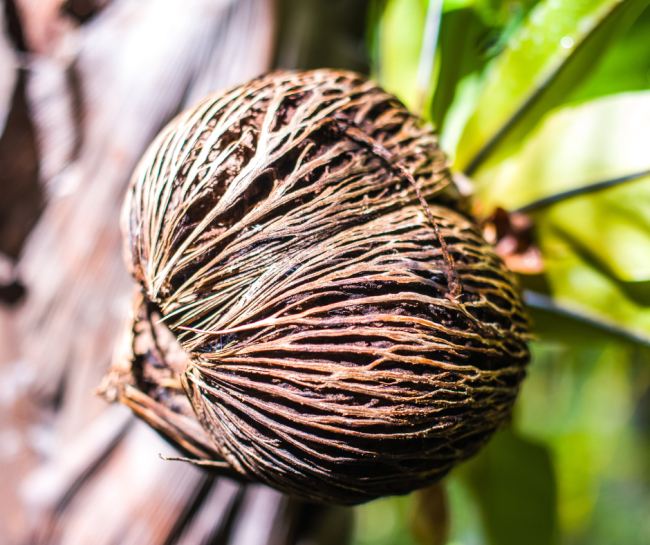
Its seeds have been reportedly used in more suicides and murders than any other plant, earning it a grim reputation as The Suicide Tree. The insidious nature of this poison is all the more chilling given its ability to hide its taste in food. Some even refer to cerberin as the “perfect murder weapon,” a claim underscored by the tragic fact that Cerbera Odollam reportedly caused more than 500 deaths in Kerala, India, between 1989 and 1999 alone.
The symptoms of poisoning—burning sensations, vomiting, headaches, and irregular respiration—paint a harrowing picture, but the tree also possesses an unexpected side.
Even though the Cerbera Odollam is known as one of the most poisonous trees, it’s not all bad news. Scientists have found good uses for its fruit. They use it to make things like bug sprays, deodorants, and might even use it to help make biodiesel fuel.
So, the Cerbera Odollam tree has two very different sides. On one hand, it’s known for its deadly poison. On the other hand, it has practical uses that can help people. This tree is a clear example of how something in nature can be both dangerous and helpful at the same time. It’s a reminder that things aren’t always as simple as they seem.
3. Hura crepitans – The Dynamite Tree
Florida is home to not only the infamous Manchineel Tree, but also to another contender for the world’s most dangerous tree: the sandbox tree, also known as the Dynamite Tree, possumwood or jabillo.
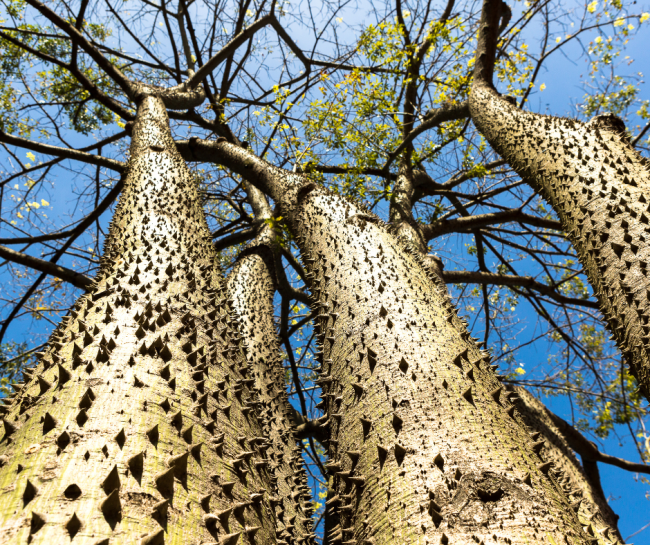
This menacing tree can also be found in Puerto Rico, the Virgin Islands, and tropical regions of North and South America—including the Amazon rainforest.
The Dynamite Tree has pretty impressive looks, displaying its broad leaves and red flowers for everyone to see. But its most distinguishing feature is its gray bark covered with large, conical spikes. This intimidating appearance has earned it the nickname “monkey-no-climb.”
However, the spikes are merely the tip of the iceberg when it comes to this tree’s dangers. The tree’s toxic sap can cause a painful rash and blistering red welts on the skin if it comes into contact with a person or animal. If the sap reaches the eye, blindness can result. Indigenous peoples have even used this potent sap to poison arrows and darts for hunting and warfare.
As if these dangers weren’t enough, the sandbox tree has another surprising and perilous feature: exploding fruit! Yes, you heard that correctly.
Its fruits are pumpkin-shaped capsules that grow about the size of a small apple. When ripe, the fruit explodes with a loud noise. It basically splits apart and shoots out these big, hard seeds like shrapnel. If you’re nearby, it could injure you.
But why does it explode?
This explosive phenomenon, known as “explosive dehiscence,” is a unique way for the tree to spread its seeds.
And if that’s not enough, there are other parts of the tree that you’ve got to watch out for, too. The shell of the fruit itself is super poisonous. Some people have tried to make bracelets and necklaces out of it, but that can cause skin problems. In the Dominican Republic, it’s one of the 14 most common plants that cause skin reactions.
So, the Dynamite Tree isn’t something to mess with! However, in some cases it could prove useful. For example, people used wood to make furniture, and they called it ‘hura’. A long time ago, before we had the pens we use today, people would cut the tree’s unripe seed pods in half. They’d use these halves to make decorative holders for pen sand, which is why some people call it the ‘sandbox tree.’ Pretty neat, right?
4. The Namibian Bottle Tree is one of the most dangerous trees in the world
The Namibian Bottle Tree is a fascinating tree native to the arid deserts of Namibia, Africa. Its unique bottle-like shape isn’t just for show; it serves the practical purpose of storing water. But don’t be tempted to take a sip, as this water is highly poisonous and can be fatal to both animals and humans!
Local hunters have figured out how to use this toxic water to their advantage, employing it in their hunting techniques. The tree’s poisonous content is a natural defense mechanism, protecting its precious water supply from thirsty desert animals that might otherwise deplete it. Adding to this defense is an array of thorny branches that deter any unwanted attention.
Though its characteristics may sound menacing, the Namibian Bottle Tree is unlikely to pose a threat to most people. Its specialized desert habitat and distinct shape make it easily recognizable, and its limited range means that the chance of encountering it outside of Namibia is rare. So while it’s equipped with some intense survival tools, this tree is mostly a marvel to observe rather than a danger to avoid. If you ever find yourself in its native region, it’s a sight you won’t want to miss!
5. Bunya pine
The Bunya Pine is a unique tree native to southeastern Queensland, Australia. While it isn’t considered poisonous or inherently dangerous in the way some of the previously mentioned trees are, the Bunya Pine does pose a particular risk due to its large cones.
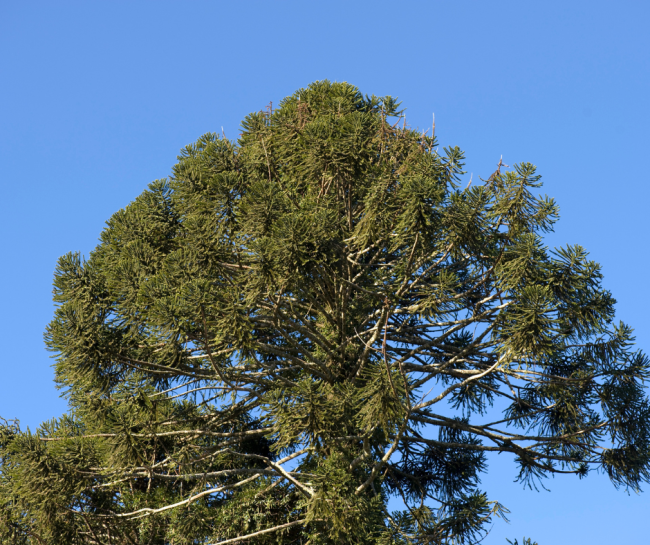
These cones are enormous, often weighing between 10 and 15 pounds (4.5 to 7 kg), and they contain edible seeds that were a valuable food source for Indigenous Australians. However, these cones tend to fall from the tree from time to time, and if you happen to be underneath it, well…that’s not good.
The sheer size and weight of the cones, combined with the height from which they fall, can prove fatal for any child or adult.
Some areas with Bunya Pines may even have warning signs advising caution during the times of year when the cones are likely to fall. While the tree itself isn’t inherently harmful, this particular aspect of the Bunya Pine does require awareness and caution.
So while the Bunya Pine doesn’t have toxic sap or exploding fruit, its hefty cones make it a tree to be respected and approached with care, particularly during the season when the cones are maturing and likely to fall.
6. The Black Locust Tree. Is it one of the most dangerous trees in the world?
The Black Locust Tree is a fascinating yet potentially dangerous tree native to the eastern and central United States. It has since been introduced to other zones around the world.
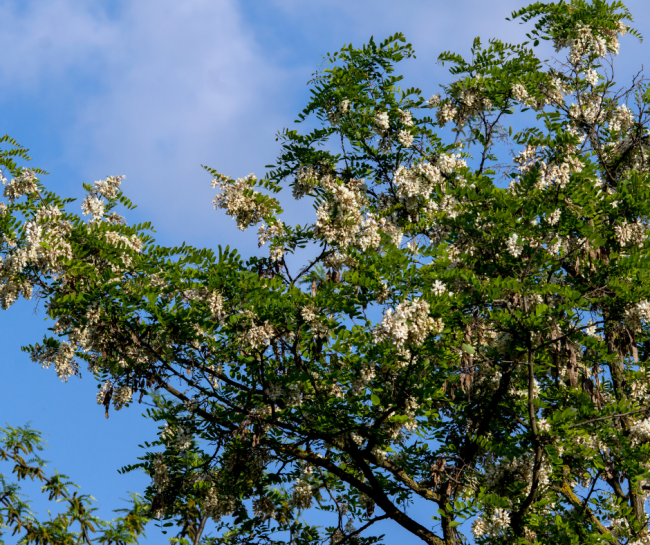
The tree features a rough bark and some pretty serious thorns on its branches. Those thorns are more than just for show. They can actually poke you hard enough to cause pain, swelling, and sometimes even more serious problems.
But hey, it’s not all danger with this tree! In late spring, it puts on quite a show with gorgeous white flowers that hang down in clusters. And during the winter, you might spot brown pods on the tree, each filled with seeds.
Now, about those seeds and other parts of the tree – they contain something called toxalbumins. These are toxic proteins that can make you pretty sick if you chew or swallow them. Symptoms might include nausea, weakness, or even more serious stuff like liver injury or seizures if you really go to town on them.
Animals, especially horses, can also get sick from the tree, and there have even been a few instances where kids have become ill after munching on parts of it.
You might be wondering, “Why is this tree around if it can be so dangerous?” Well, besides its good looks, the Black Locust Tree has sturdy wood that can be used for various purposes. It’s a reminder that even something beautiful can have a prickly side.
7. Gympie Gympie
That’s a funny name, right? But it won’t sound that funny after you hear the whole story.
Gympie Gympie is one of Australia’s most fearsome plants. Also known as “the stinging tree”, it looks quite innocent with its heart-shaped big leaves. But touch them, and you’ll feel the pain of those dozens of hair-like needles filled with a powerful neurotoxin. The pain from a touch has been likened to “being burnt with hot acid and electrocuted at the same time”. That sounds horrible, doesn’t it?
Even professionals with protective masks and gloves have fallen victim to its sting. The experience can lead to hospitalization, severe allergies, and eventually a doctor’s advice to stay away from the plant altogether.
The sting’s effects are not only for humans. Reports showed that horses can also die within two hours of being stung. In fact, the Gympie Gympie has made its mark on local folklore, with tales of horses jumping off cliffs in agony and even an officer shooting himself after an unfortunate encounter with the leaf.
For those working in the area, such as foresters and timber workers, precautions like respirators, thick gloves, and antihistamine tablets are sometimes supplied.
What’s interesting is that some animals can eat the leaves without issue. That’s why the toxic compounds in the Gympie Gympie leaves are still the subject of studies.
Whether it’s a stinging slap or a touch that sends you into a world of pain, the Gympie Gympie is a fascinating yet fearsome part of Australia’s natural landscape. If you’re ever in its territory, it’s best to admire from a distance and heed the warnings of those who’ve felt its wrath.
8. Eastern Cottonwood
The Eastern Cottonwood is a pretty fascinating tree, not for its toxicity (it’s not poisonous like some others we know!), but for a different kind of danger. We’ll get into that in a minute. But first, let’s see what this tree looks like.
It’s native to over half of the U.S., particularly in the Midwest, Deep South, and stretching as far north as Vermont and Montana. It loves being near streams and riverbanks and often grows in pure stands. It’s one of the largest eastern hardwoods, reaching impressive heights of 70-100 feet.
And here’s where things get tricky. While it grows tall fast, its root system doesn’t keep up, and the tree becomes top-heavy. The wood is also relatively weak. This means that a tall tree with shallow roots can easily topple, especially in bad weather conditions like strong winds or ice storms. If it’s in a populated area, it’s a real risk to people and properties.
That’s why the Easter Cottonwood tree is not a tree you’d want in your backyard. Imagine having a giant, wobbly tree towering over your house – not the most comforting thought!
Despite these risks, the tree has its good sides. It’s used for pulpwood, shipping crates, plywood, and lightweight furniture. Thanks to its growth rate, it’s a true marvel of nature, but its weak roots make it a danger if not handled with care. It’s a reminder that not all dangers in the natural world come from poisons or toxins. Sometimes, it’s the way a tree grows that poses the real threat.
9. The Milky Mangrove
The Milky Mangrove is quite an intriguing tree that can be found growing on tropical coastlines. While it might look beautiful, enhancing the scenic view of a coastline, there’s more to this tree than meets the eye.
Growing as either a shrub or tree, the Milky Mangrove can reach up to 15 meters in height. Its leaves have an oval shape with a pointed tip, and some even have finely toothed edges. What sets this mangrove apart, though, is its milky sap.
Now, this is where the Milky Mangrove gets its name – and its warning label! If any part of this tree gets scratched or cut, it oozes out a milky sap. But this isn’t the kind of milk you’d want anywhere near you. This sap is highly toxic.
If this milky substance touches human skin, it can cause blisters and swelling in the affected areas. And if it gets into the eyes? We’re talking about potential temporary blindness.
10. European yew
The European yew, scientifically known as Taxus Baccata, is a fascinating tree that combines both beauty and danger.
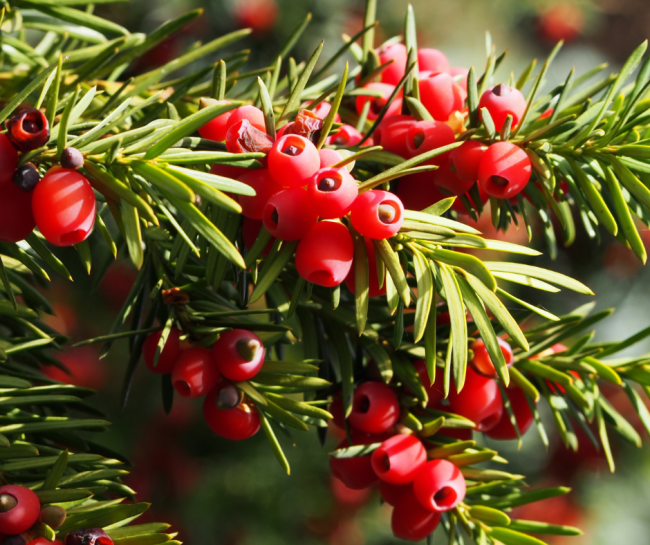
It is a coniferous tree, boasting dark green needles and vibrant red berries. It can grow quite large and has a distinctive, dense appearance.
However, the tree’s beauty hides a dangerous secret. The leaves, seeds and even bark contain a substance known as taxine, which can be deadly if ingested. The symptoms of poisoning can include difficulty breathing, muscle tremors, convulsions, and, in severe cases, death.
Interestingly, the fleshy red part of the yew’s berries (the aril) is not toxic and is even considered edible. However, the seed inside is highly toxic, so extreme caution is required.
In the past, the tree’s wood has been used to craft bows, spearheads and tool handles. In some traditions, the tree is associated with death and rebirth, perhaps because of its toxic nature and its evergreen leaves. Besides its traditional uses, compounds from the yew have been explored in medicine, particularly in cancer treatment. The drug paclitaxel, used in chemotherapy, was initially derived from a species of yew.
11. The Strychnine tree
This medium-sized tree is native to Southeast Asia and India. It bears small, greenish-white flowers and round fruit with a hard shell.
The fruits contain two main alkaloids called strychnine and brucine. Both of these substances are highly toxic, with strychnine being particularly notorious for its poisonous content.
Strychnine poisoning can be incredibly severe and often fatal. It affects the central nervous system, leading to symptoms like muscle stiffness, convulsions, and eventually death through asphyxiation, as the respiratory muscles become paralyzed.
You know, there used to be a time when the Strychnine tree was actually used in medicine and as a pesticide. Can you believe that? But don’t worry, things have changed now. Today, people really understand how dangerous this tree can be, so there are some pretty strict rules about handling it. If someone gets poisoned by strychnine, it’s nothing short of a medical emergency, and they need help right away. So, if you ever come across this tree, just remember to be extremely careful. Touching the seeds or other parts of the tree is risky business, and eating them is an absolute no-no!
So, there you have it, folks! From trees that can knock you off your feet to plants that pack a serious punch, Mother Nature sure has some wild tricks up her sleeve. But hey, it’s all part of what makes our world so fascinating, right? Just remember, next time you’re out and about, keep your eyes peeled and your hands to yourself around these green giants!
